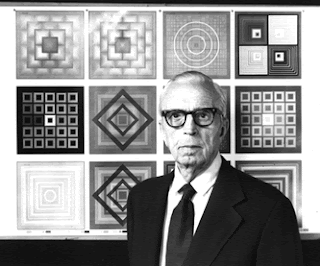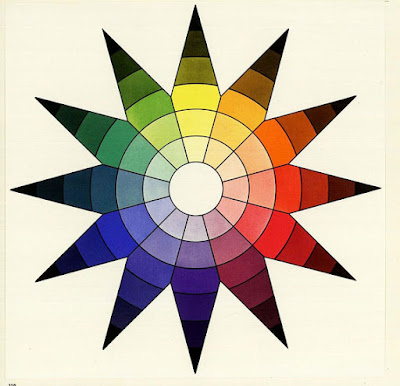I think it's significant
to distinguish the importance of color in each of our lives, considering how
little we know about our minds and how we each perceive our own worlds.
The first time I realized how much our opinions and perceptions had an effect on our own views for the world, was the day my uncle explained to me that he was color blind. He would always ask me what ice-cream I wanted, or what I wanted to wear that day, and I was the little kid that always referenced things by color. Which unfortunately for him, frustrated the both of us very quickly. My young mind tried to comprehend how sad it must be, not to be able to see color. My uncle quickly extinguished that idea when he explained to me, "Grey is one of the most beautiful colors. It is all of the colors and none of the colors mixed together at different levels to make an abundance of hues." He saw beauty in grey, when society programmed us to see a depression state.
The first time I realized how much our opinions and perceptions had an effect on our own views for the world, was the day my uncle explained to me that he was color blind. He would always ask me what ice-cream I wanted, or what I wanted to wear that day, and I was the little kid that always referenced things by color. Which unfortunately for him, frustrated the both of us very quickly. My young mind tried to comprehend how sad it must be, not to be able to see color. My uncle quickly extinguished that idea when he explained to me, "Grey is one of the most beautiful colors. It is all of the colors and none of the colors mixed together at different levels to make an abundance of hues." He saw beauty in grey, when society programmed us to see a depression state.
 | ||
|
The most well-known way to do this was through consultation of colors and what those colors meant to the client, then creating safe photos and designs to keep close by
to the patient.
Johannes Itten (1970) is another influential color theorist who has strong presence in the art therapy practice. I have compiled some of Itten's color patterns in hope of response to some of the feelings you get from the colors and designs. What do these colors remind you of? And more importantly of the pallet was calming or not.
 | ||
|
 |
| Figure 3.JOHANNES ITTEN Plakat für die Ausstellung Baden-Baden, 1965. |
 |
| Figure 4.JOHANNES ITTEN Komposition mit Quadraten und Rechtecken, 1966. |
 |
| Figure 5.JOHANNES ITTEN Kunst der Farbe. 1961 |
Each painting has a
different feeling, and calms some people down. Some designs are organized and orderly,
while others are neutral colored and more of a messy natural look. To different
people, different things are calming; this is how color and views on color can
affect our moods and perceptions in the world.
-RP
-RP
Resources:
Birren, F. (2016). Color
psychology and color therapy; a factual study of the influence of color on
human life. Pickle Partners Publishing.
Itten, J., & Birren,
F. (1970). The elements of color; a treatise on the color system of
Johannes Itten, based on his book The art of color. New York: Van Nostrand
Reinhold.
Ketterer, & Kunst. (n.d.). Johannes Itten Biography - Infos - Art Market. Retrieved September 15, 2016, from http://www.johannes-itten.com/
A strong post, particularly when you start discussing the psychology and color and displayed Itten's art. I find figure 3 most calming!
ReplyDelete